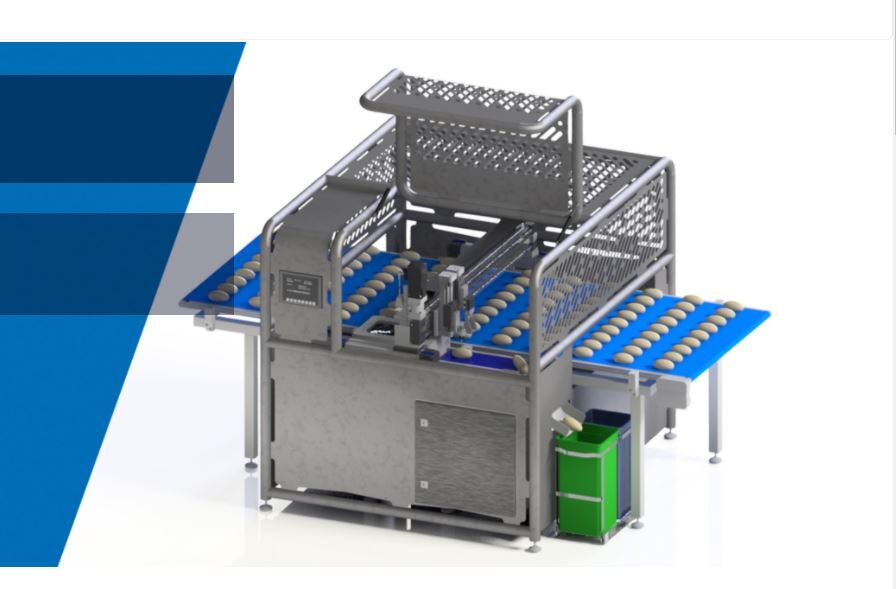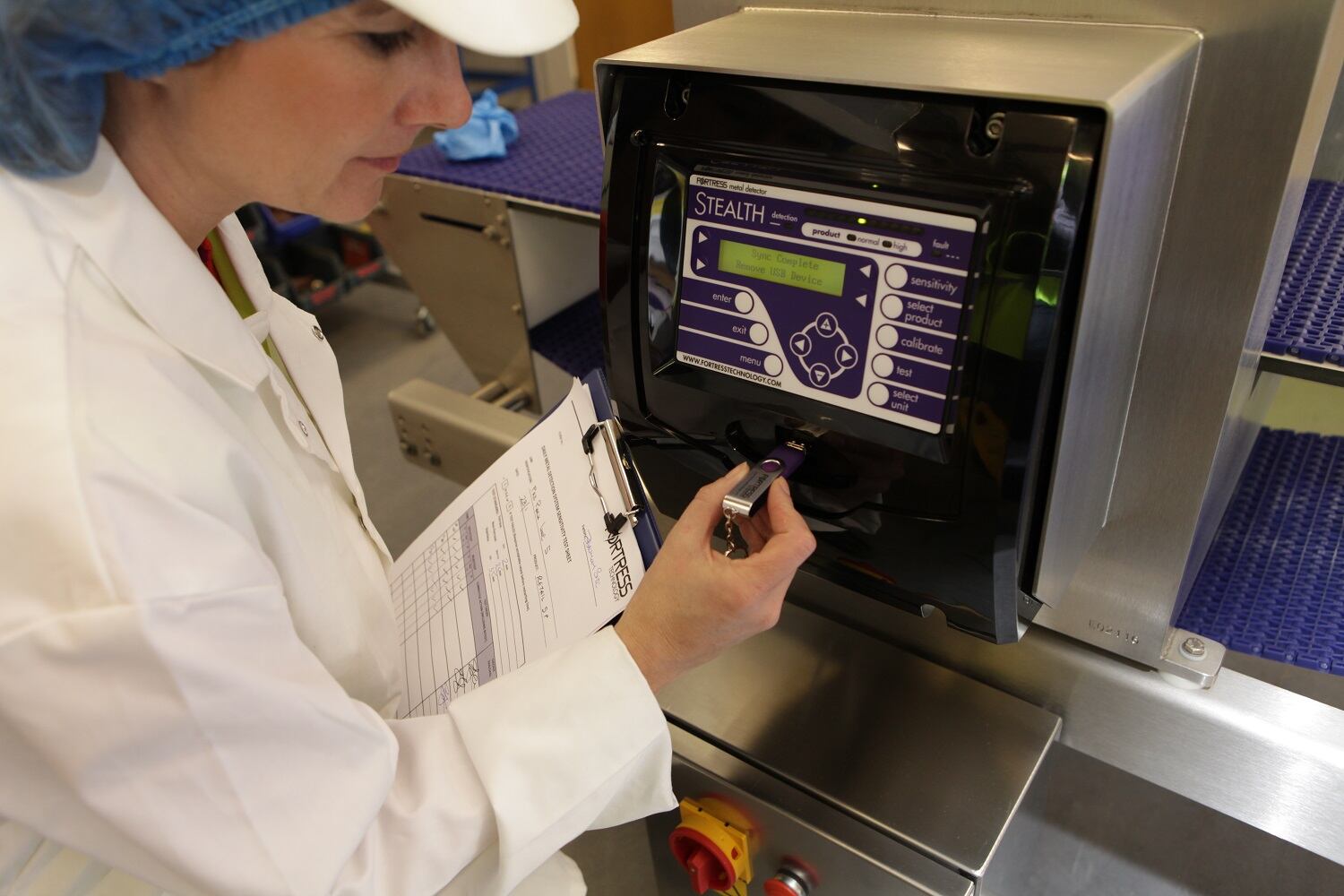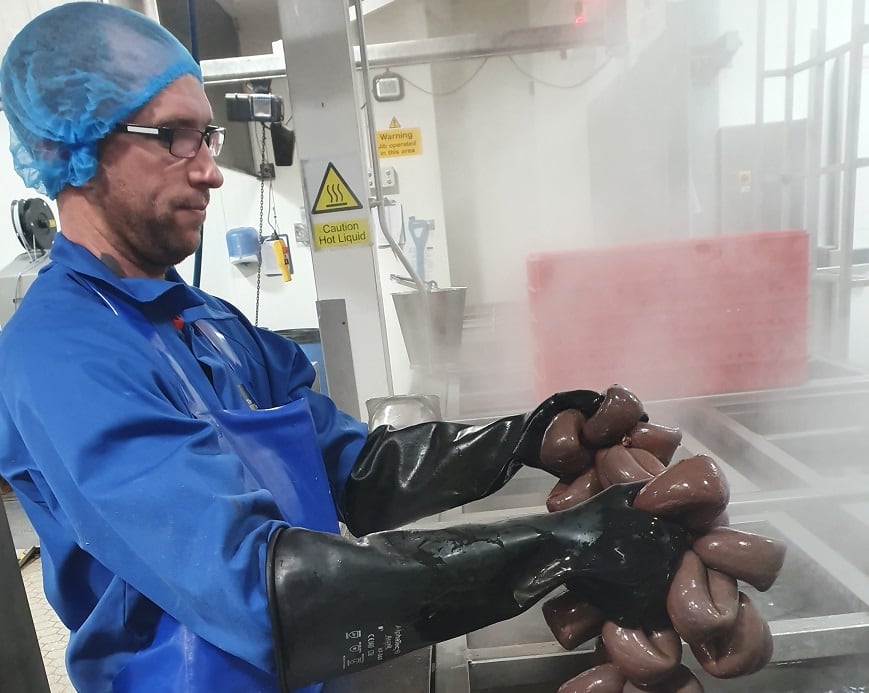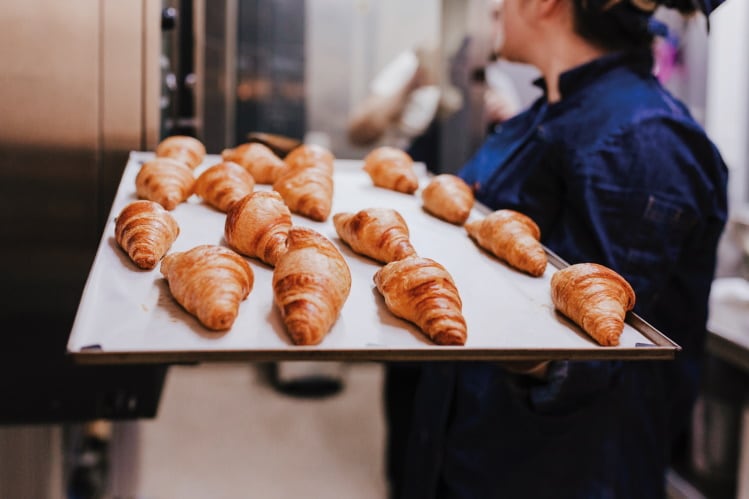The agreement has been signed by automation specialist CME Ltd, which will bring the tool to market, and Industrial Technologies Limited, a sister company of Oven Temperature and Humidity Monitoring specialists McQueen Cairns Technology. The device, which is believed to be the first of its kind, is designed to integrate seamlessly into production lines and radically improve food safety standards and cost for operators in the cooked and ready-to-eat segment.
"Unit number one isn't yet built, but a design is largely complete and a concept is well understood," said CME managing director Paul Knight. "We're engaging in potential end-users in early stage discussions, so it's commercially ready now." He said business development would initially focus on the UK market, quickly followed by Europe and North America. "Probably a launch customer is the next step."
The traditional method for checking and recording the core temperature of food products during production is entirely manual. An operator is required to remove a product from the line, manually insert a temperature probe and wait for a pre-determined time before recording the temperature by hand.
Food safety risks
Any deviation by the operator from the required checking interval or defined procedure can result in not only inaccurate information but potentially serious food safety risks for the consumer. The new system will eliminate the need for training operators to use and calibrate these temperature probes – a major headache and cost reported to Industrial Technologies when carrying out surveys of existing methods in various countries. In addition, automating the process could have health and safety benefits, because it meant temperature monitoring personnel did not have to perform repetitive tasks in extremely hot environments. Some oven belts are so wide, effective manual temperature monitoring is extremely difficult.
Robin Cairns, founder of McQueen Cairns and Industrial Technologies, said off the back of the surveys 'a major household name in frozen fish has really been quite engaging'. Companies across Europe and even in the US had expressed an interest, he added.
Key themes driving interest in the system included reliability of measurement and the generation of an electronic record for the purposes of monitoring variables, Cairns said. "If a customer wants to know what happened at ten minutes past three on a Friday afternoon on line ten, he can drill down and see precisely." The approach bypasses the need for paper-based records and CME and Industrial Technologies were both looking at how to enhance the use of the digital data once captured.
Knight added 'the mitigation of risk via the virtual elimination of an undercook issue and the virtual elimination of an overcook issue leading to poor customer feedback' was a prime benefit. "That's probably going to be the biggest draw I would expect."
Machine vision
By taking control of the process through the use of automation, products can be removed from the line at pre-determined and selectable intervals. They can also be taken from all areas of the line to evaluate cross-band temperature variation in cases where products on one side of the line exhibit higher temperatures than those on another side. The process uses machine vision to ensure the temperature probe will be inserted in the right position on the product.
The probe can also be calibrated to be inserted to the correct depth and for the correct time to provide accurate and reliable data, which can be used to monitor temperature variation trends and for traceability. Tested product can either be returned to the line or segregated.
Cairns said he was now looking at devising a multi-pin probe that could be measure the temperature of different parts of the same product, in the case of pies and pasties for example, so pastry and filling could be measured separately.
The control and consistency of the automated process embraces Hazard Analysis Critical Control Points (HACCP) principles.
Self-cleaning and calibration routines
The system includes self-cleaning and calibration routines for the probe, which further enhance the quality of the data being recorded by eliminating the potential variability of a manual process. It will initiate alarms if under- or over-cooked products are detected. Thresholds for such alarms can be programmed by the user.
Cairns said if the system throws up a strange reading, line operators are alerted and can then press a button that allows the probe to move into an adjacent sterile water bath kept at a constant temperature, which the reading can be checked against. At the same time, this process cleans the probe.
Knight said the device could also include feedback loops that could even control oven temperature or conveyor speed to better regulate the cooking process. As a result, quality could be improved and made more consistent and downtime and waste reduced.
He added: "One of the things in the early conversations that we have had with the market that's lit a few lightbulbs for me has really been about the handling of the product and what control loops could be advantageous post detecting the fact that you have got an issue."
Robin Cairns, founder of McQueen Cairns and Industrial Technologies, said: “Having spent time speaking to many automation companies, in CME we have found the ideal partner to bring this disruptive technology to market. CME’s strengths in achieving growth through diversification and the development of new products are exactly what is needed to realise the potential that this system offers.”




